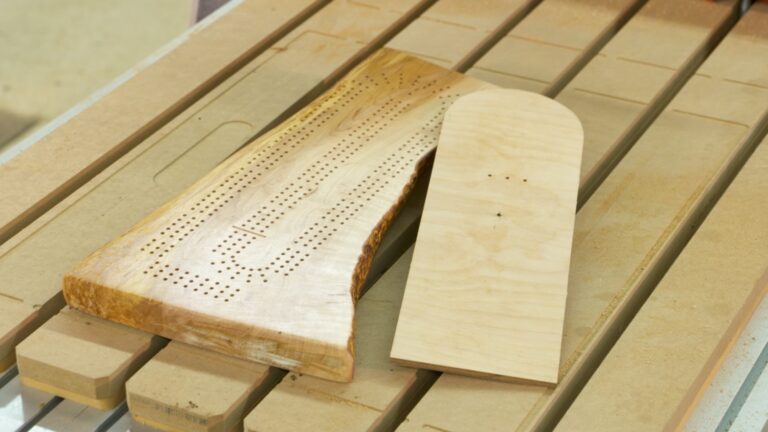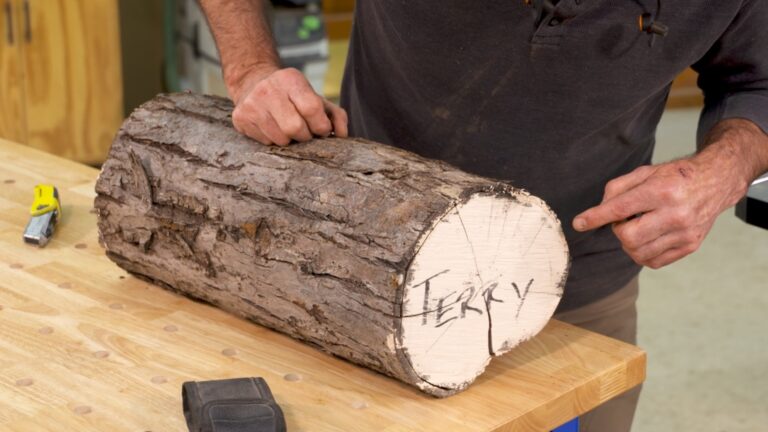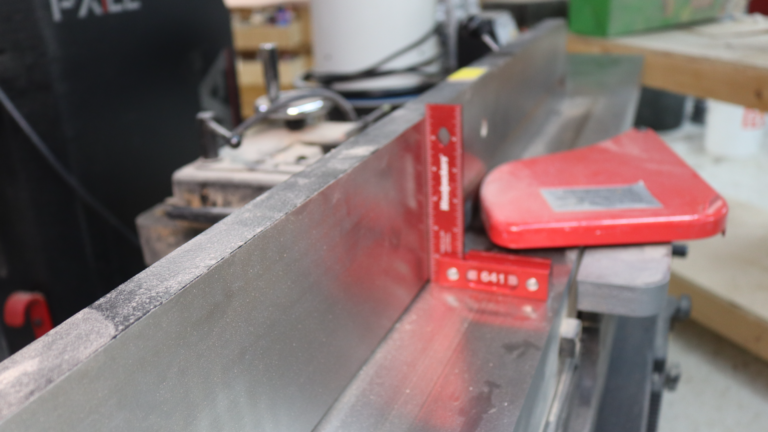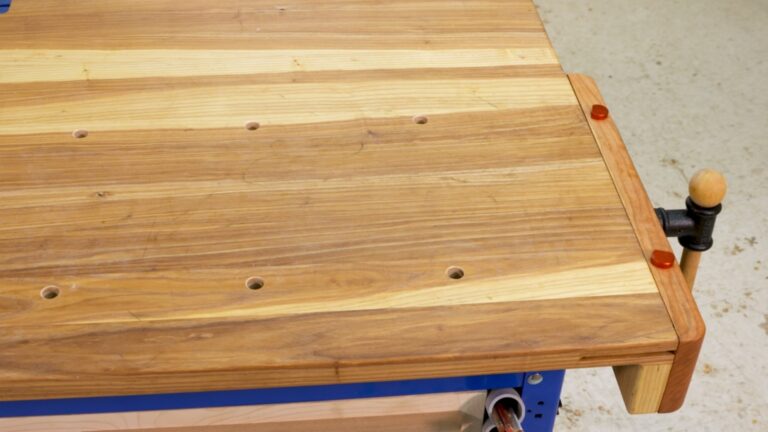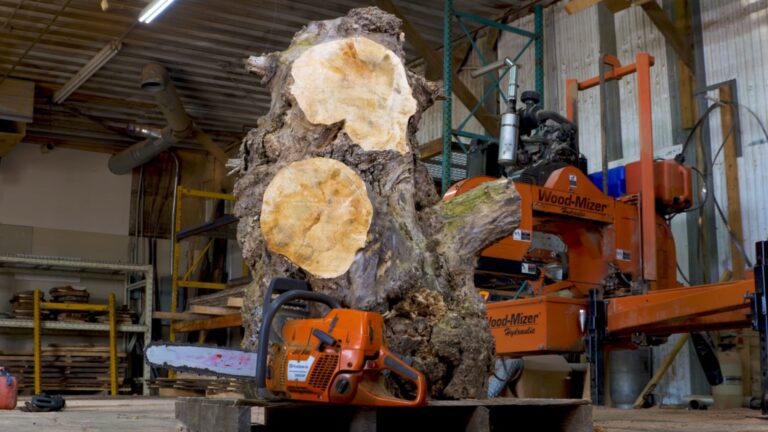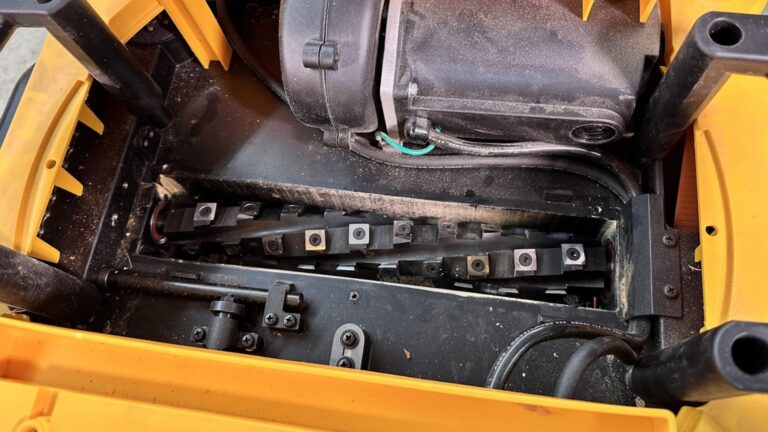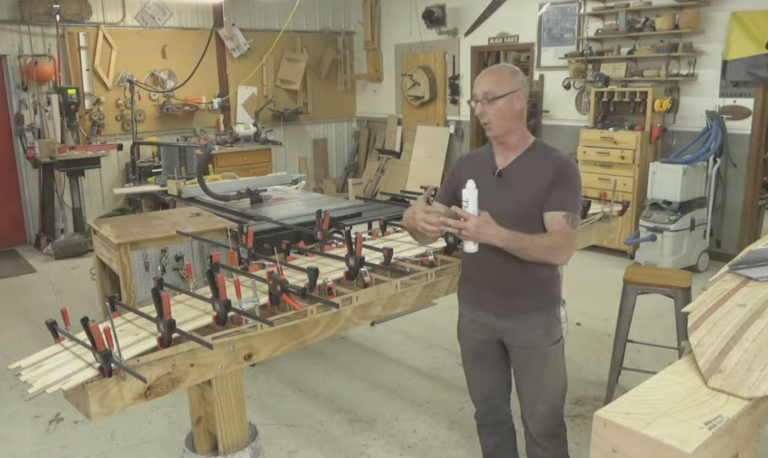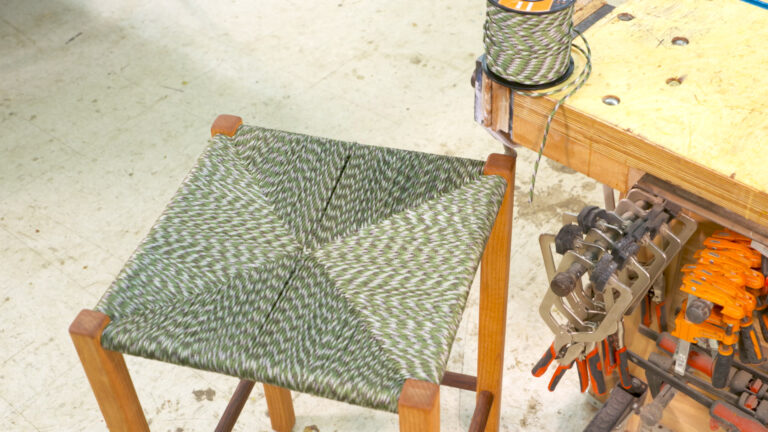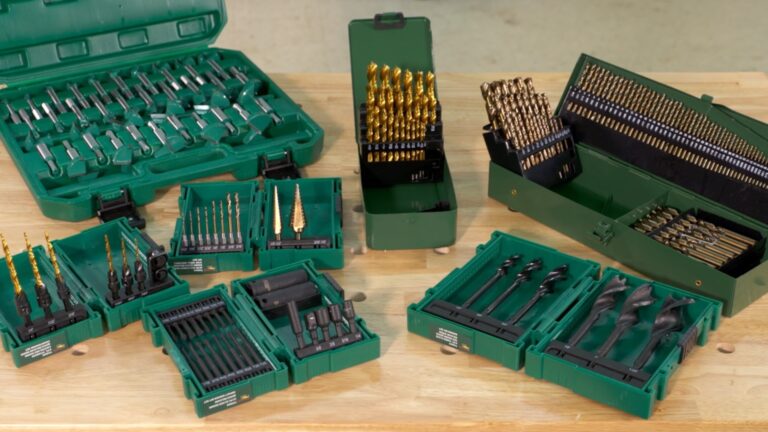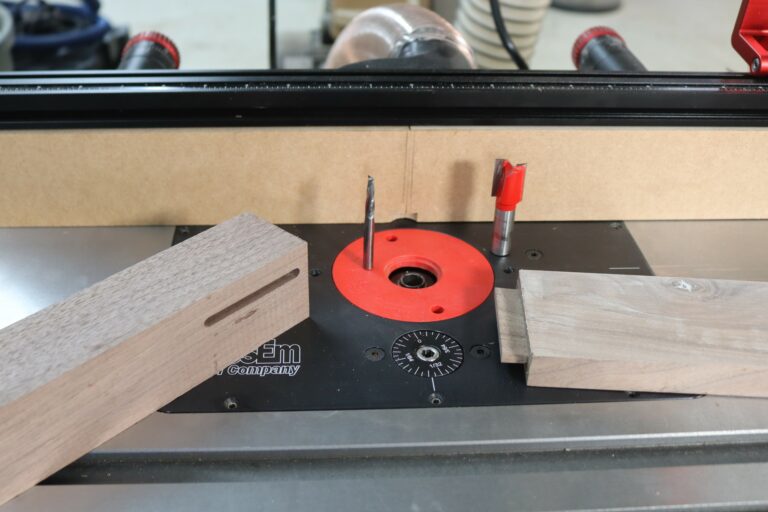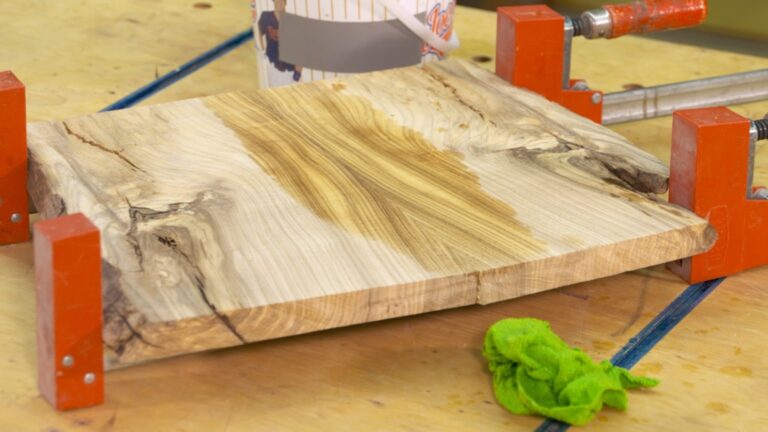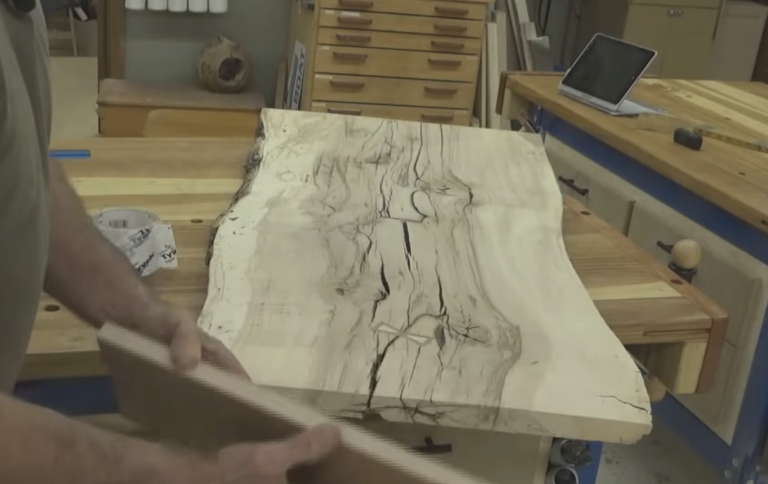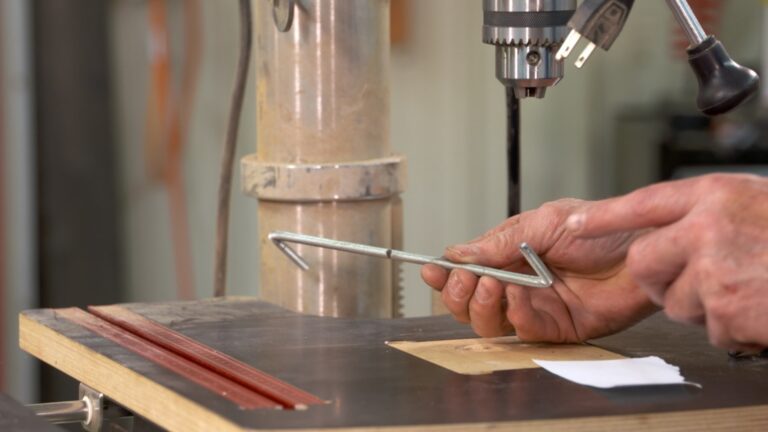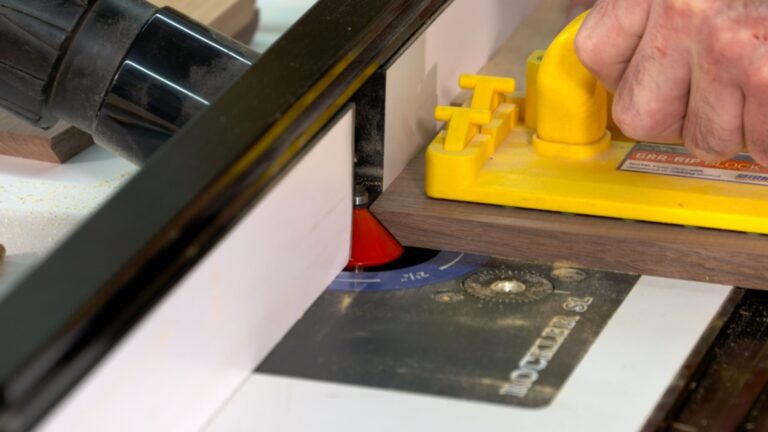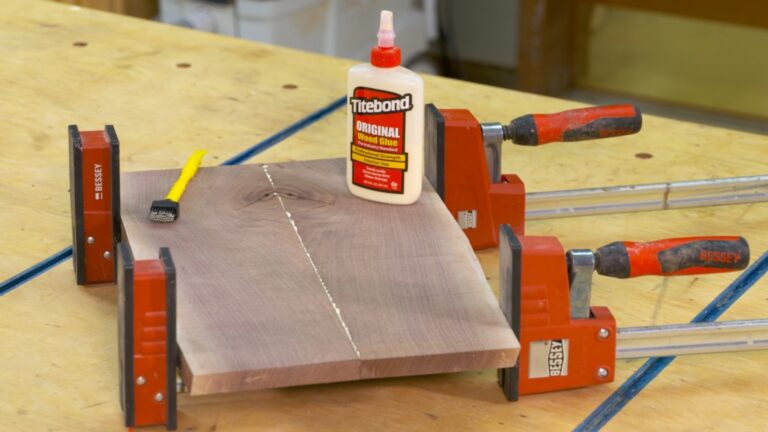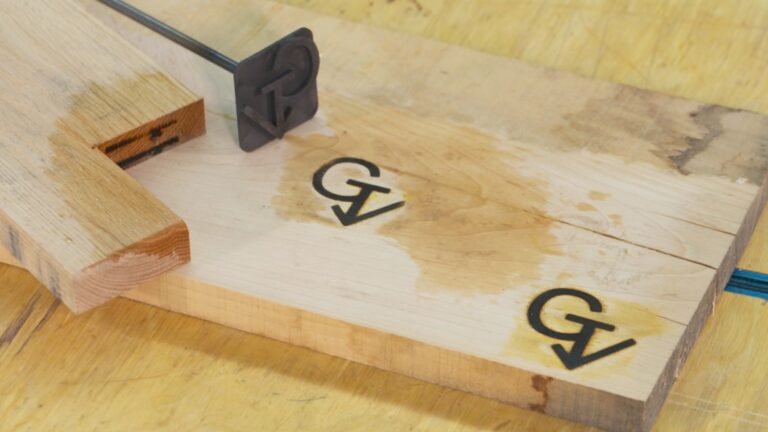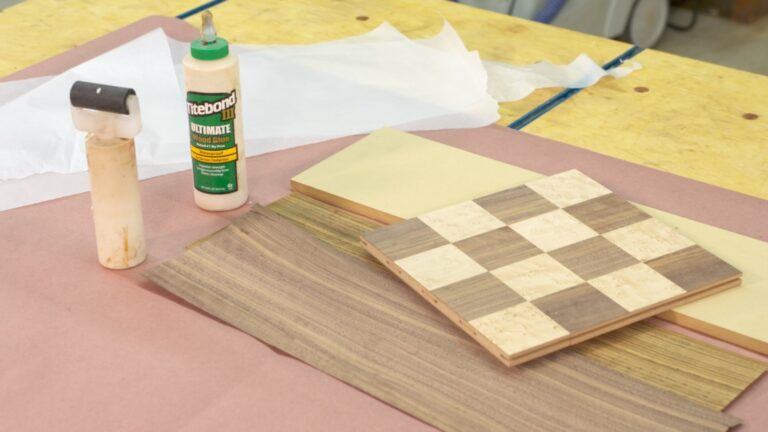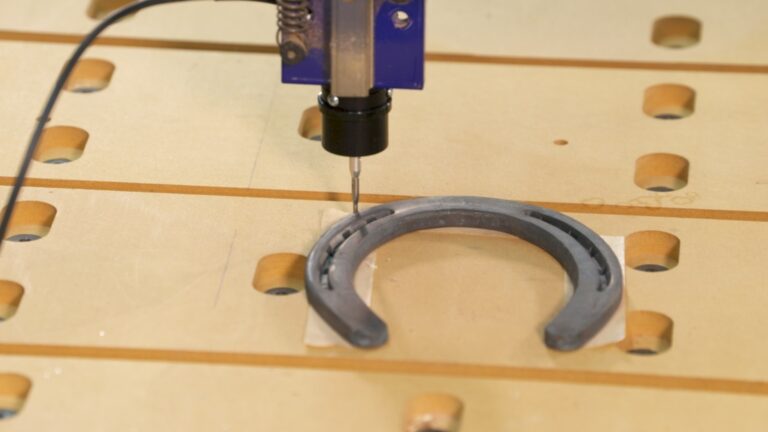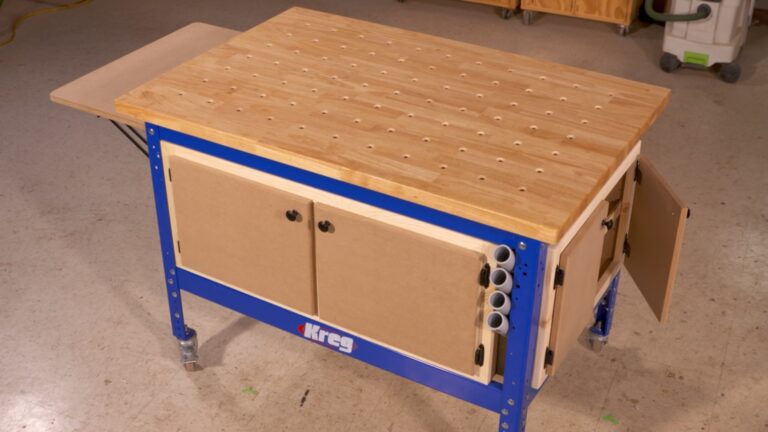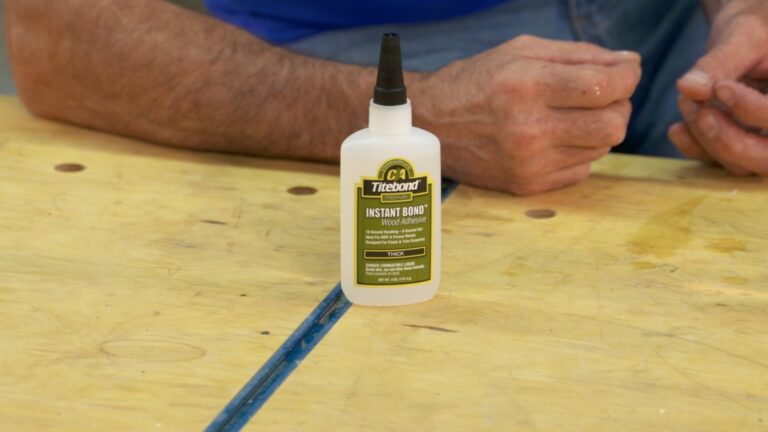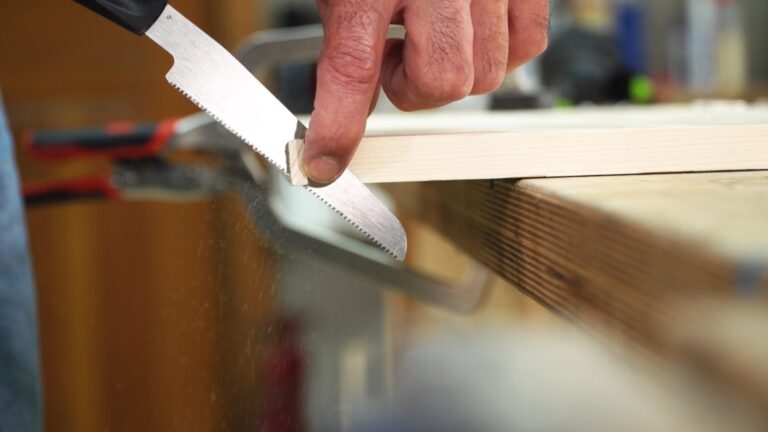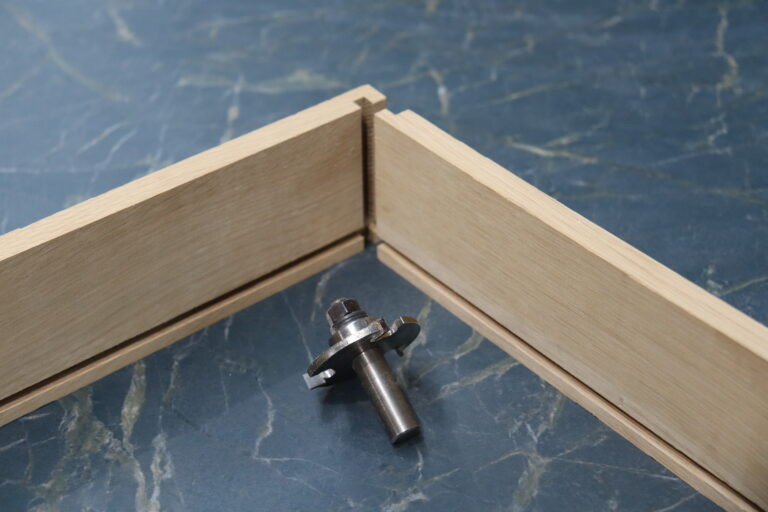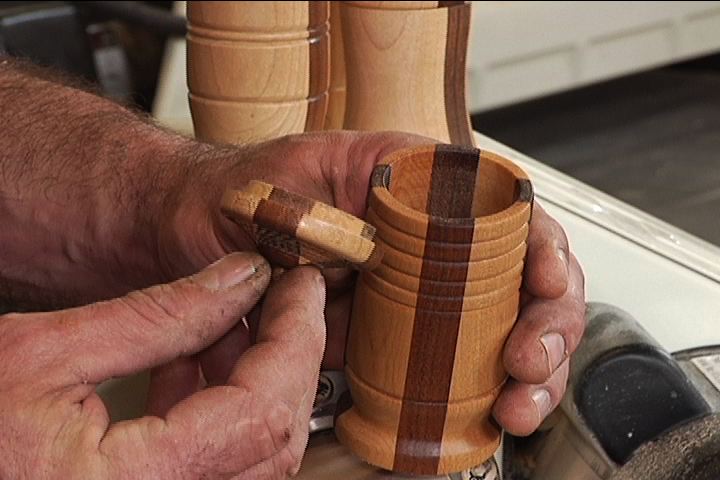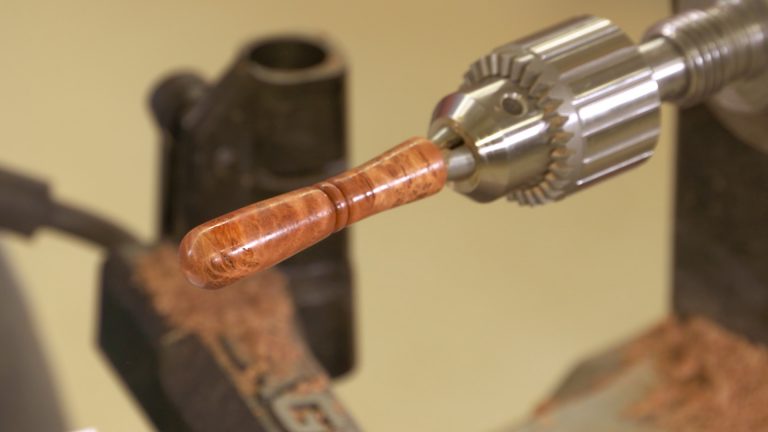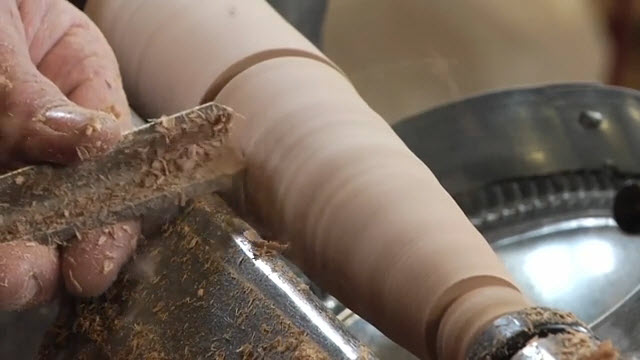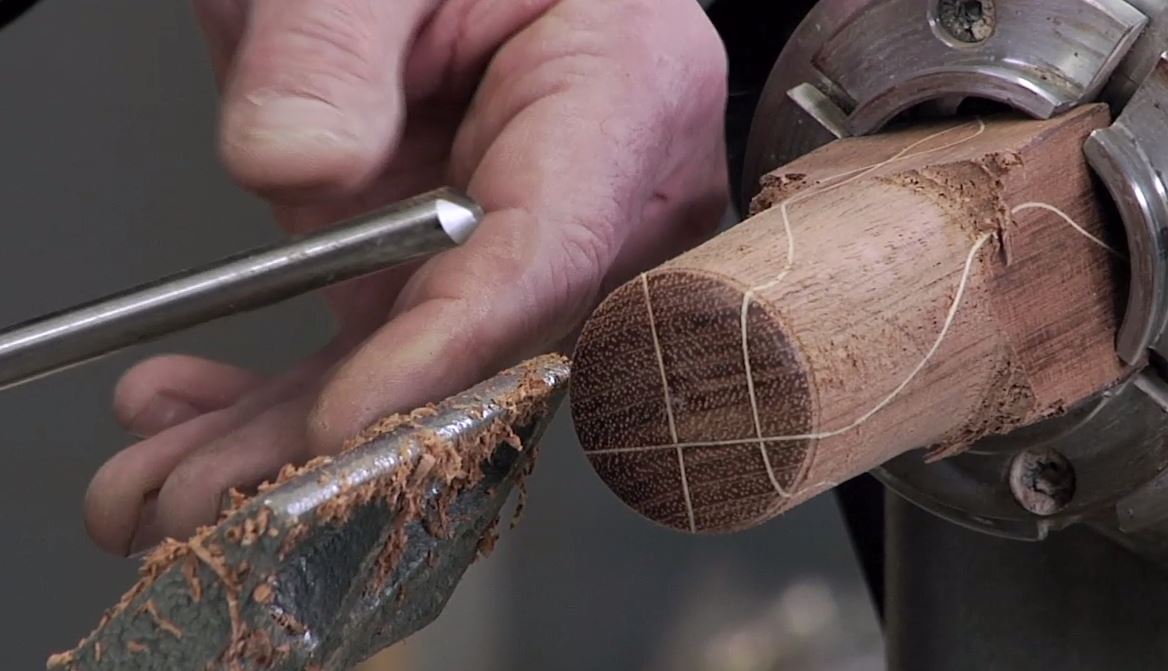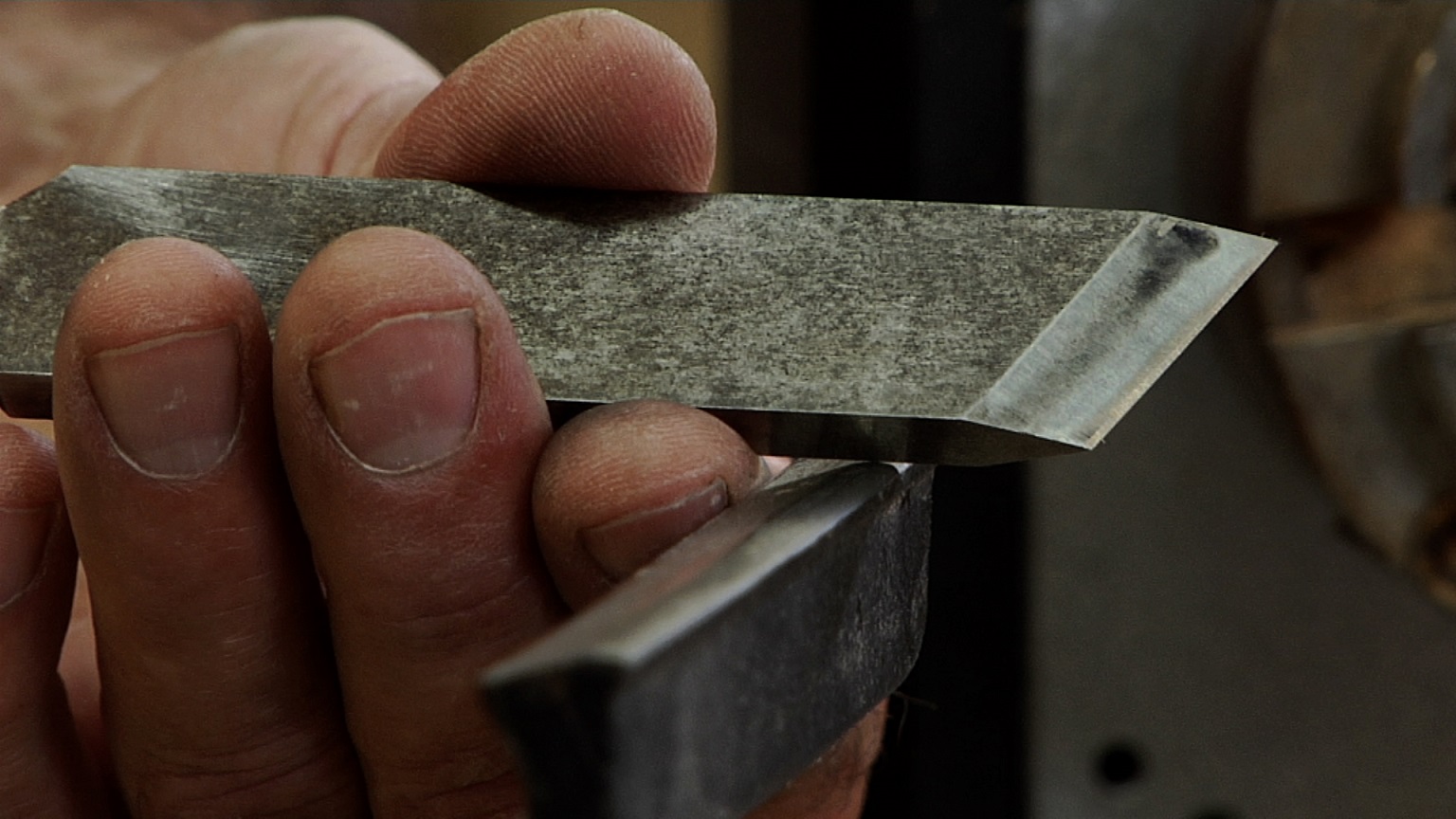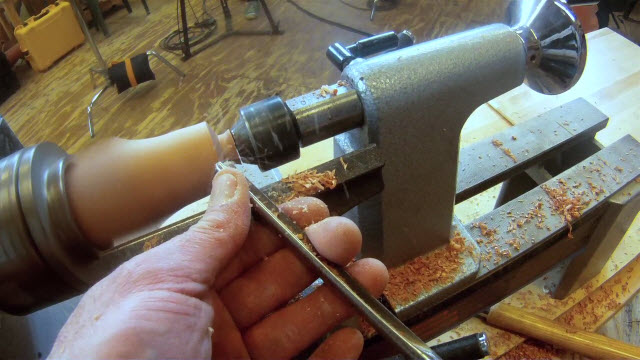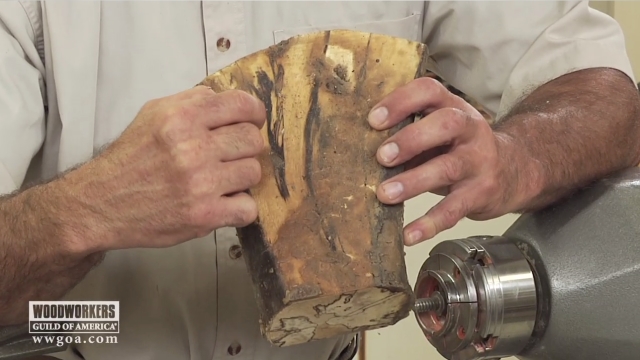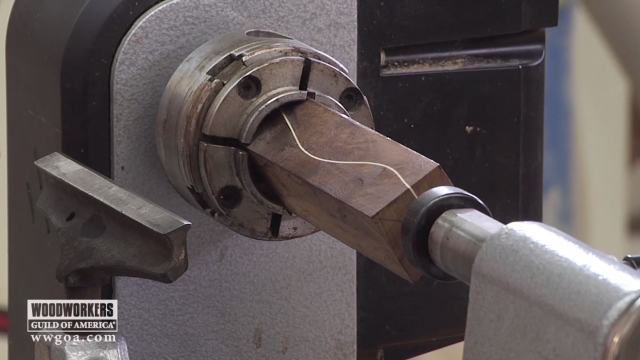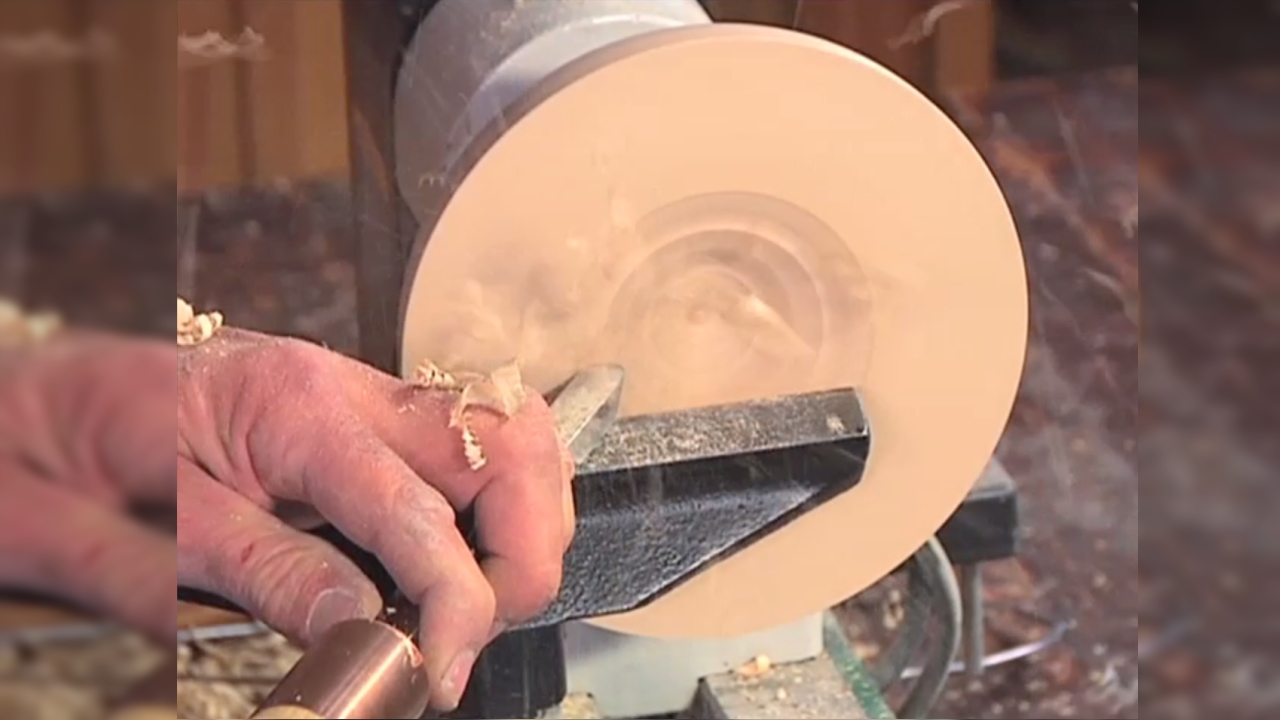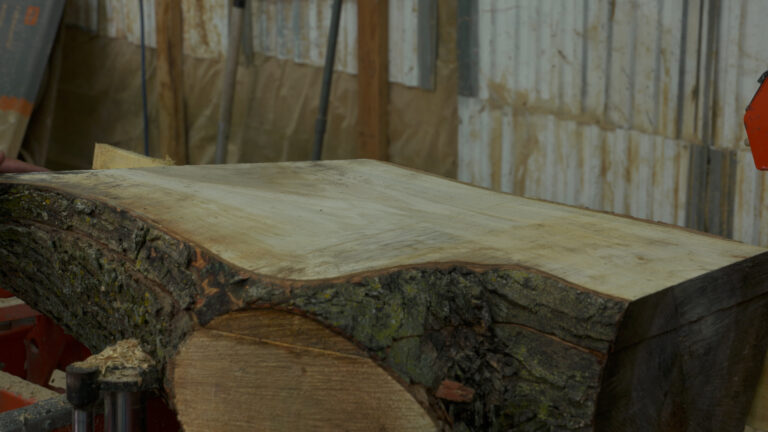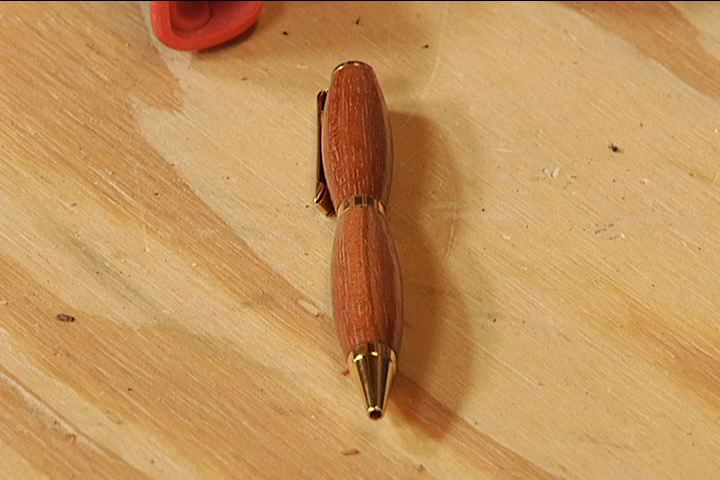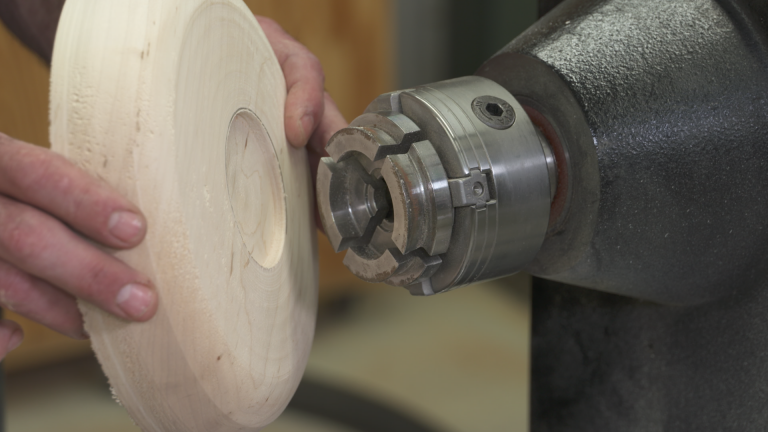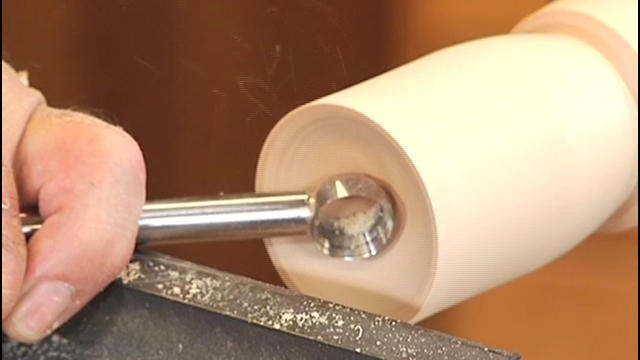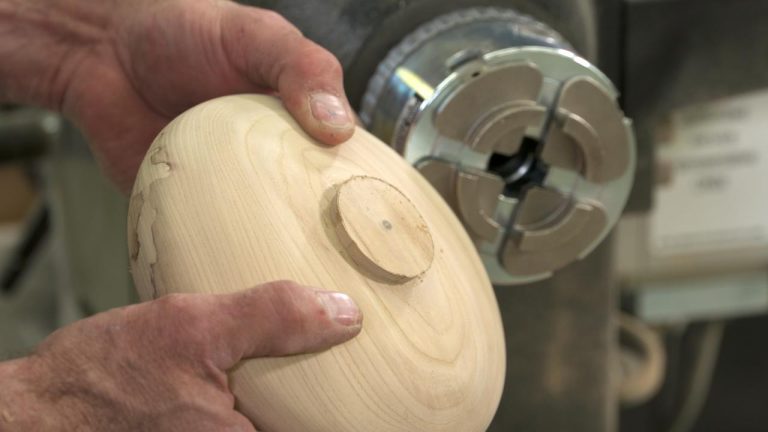
Oval Turning
George VondriskaHave you ever wanted to try oval turning on your lathe? Through the use of multi-axis turning you can do this. Multi-axis turning involves moving the live center to multiple points on your spindle to create a shape that is something other than round, such as an oval. Why might someone want to learn oval turning? One of the applications of this skill is to turn a handle for a tool such as an axe or a lathe chisel, with a profile that fits more comfortably and securely in the hand of the operator. If you apply this skill for turning your own lathe chisel handles, you can customize the grip for the size of your hand, and your gripping preferences.
Oval turning seems complicated at first, and you might be pondering how you can make the transitions smooth going from round to oval on a spindle. It’s not as difficult as one might imagine. The basic process of oval turning includes:
Mark axis points on the live center end. Determine the profile that you want to create, and mark offset points accordingly, using an awl to create an indentation at each location.
Turn from each offset point. Set the live center in one of the points, and turn until you have achieved the desired size. Move to the other offset point and repeat. This will create the oval shape that you desire.
Finish turning from the center. This will reduce the overall thickness of the oval. You can return the live center to the offset points as needed to further refine the oval’s shape.
Then sand the piece, moving to each of the offset points to ensure that you sand all of the transitions smooth. After you’ve done this process a few times you’ll be an oval turning master!
Explore videos by George Vondriska
You may be interested in
Premium Membership
Unlock exclusive member content from our industry experts.
- 24/7 Access to Premium Woodworking Videos, Projects, and Tips
- Step-by-Step Instructional Demos, Plans, and Tutorials
- 50% Off Video Downloads Purchased in the Woodworkers Guild of America Shop
- 2 Printable Woodworking Plans
Unlock exclusive member content from our industry experts.
- 24/7 Access to Premium Woodworking Videos, Projects, and Tips
- Step-by-Step Instructional Demos, Plans, and Tutorials
- 50% Off Video Downloads Purchased in the Woodworkers Guild of America Shop
- 2 Full-Length Video Downloads to Watch Offline
- 2 Printable Woodworking Plans
Gold Membership
$370 Value
Get everything included in Premium plus exclusive Gold Membership benefits.
- 24/7 Access to Premium Woodworking Videos, Projects, and Tips
- Step-by-Step Instructional Demos, Plans, and Tutorials
- 8 Full-Length Video Downloads to Watch Offline
- 3 Full-Length Woodworking Classes to Keep for Life
- 7 Printable Woodworking Plans
- Discounts on Purchase-to-Own Content in the Woodworkers Guild of America Shop
- Access to Ask the Expert Program
- Exclusive GOLD LIVE Streaming Events
